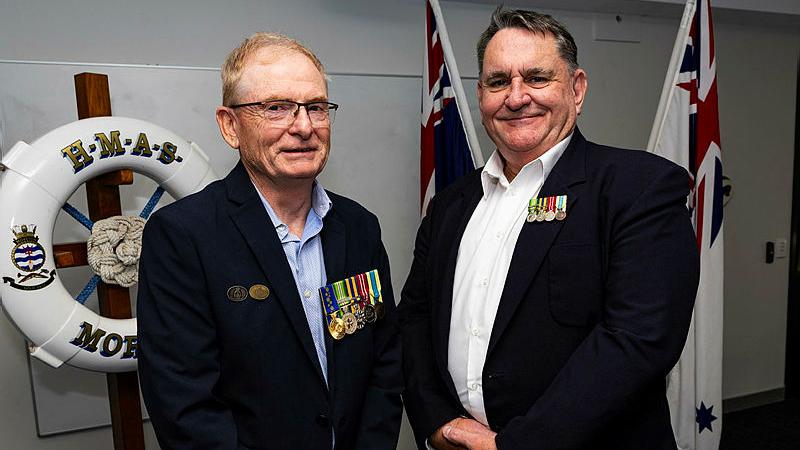The recent announcement that Melbourne has once again topped the international charts for being a cool place tells many locals what they already know.
The High Street that connects the inner north suburbs of Northcote, Thornbury and Preston is a hub of vintage stores, bespoke cinemas, lasagne on speed dial and more live gigs than you can poke a stick at.
Rightfully or not, this High Street has been awarded the title of the “coolest street in the world” by Time Out magazine.
After recovering from the excitement of living in a ‘globally cool’ city, the urbanist in me pauses to reflect on what this ranking really means. Critical questions come to mind, like what qualifies a street as ‘cool’? Who decides this?
And, perhaps most importantly, who or what is excluded from these rankings?
To qualify for this particular ‘coolness’ ranking, a city street must have a thriving economic and cultural hub with offerings of “food, drink, nightlife and culture” that appeals to locals and visitors alike.
City streets that meet this description are pitched by Time Out’s global network of journalists and editors and judged by the magazine editors based on…coolness? The exact criteria are unclear.
The rigour through which street ‘coolness’ was assessed is perhaps beside the point, but the 30-strong list of cities with cool streets does raise interesting questions about the power of a global ranking.
The list features cities that we’re used to seeing in these global rankings: London, Tokyo, Vienna, New York, Manila, Paris, Singapore and Copenhagen are regular suspects. These large vibrant urban centres often appear on global city rankings and create an image of what a city should be – cool, liveable, sustainable, beautiful, cultured and the list goes on.
For example, each year the Economist Intelligence Unit publishes their annual Global Liveability Index report which ranks 173 cities across the world based on relative stability, healthcare, education, culture and the environment, and infrastructure.
Vienna, Austria topped the charts in 2023 for the second year running, followed by Copenhagen, Denmark in second and – you guessed it – Melbourne, Australia in third (regaining “bragging rights” by bouncing back from tenth place in 2022).
Damascus, the capital of Syria, remains persistently at the bottom of the ranking as a result of ongoing “social unrest, terrorism and conflict“. These rankings create a clear delineation between those cities that are attractive to visit and live in, and those that are not. They also create a hierarchy of cities – those that get put on the map (or to the top of the list in this case) and those that don’t.
This dichotomy is cause for concern.
Research shows that city rankings can be a useful tool for driving innovation, attracting investment, showcasing best practice and “steering economic, social and spatial processes in cities“.
Some argue that benchmarking assessments can act like a pulse check for urban policymakers, helping them to assess their current situation, compare themselves with and learn from other cities, better prioritise infrastructure project funding and build collaborative city networks.
However, they also create a rank where cities are benchmarked against one another and assessed, regularly and publicly, on their performance. While city rankings are not necessarily a bad thing, often these benchmarks are based on perception rather than quantitative performance measures (actual data).
So, coolness is really just someone’s opinion, but it does drive up business for those that make the list.
Central to this debate is the power dynamics behind global city rankings – who decides what counts as globally relevant and worthy of visitation or investment – and the inequalities they perpetuate. For example, does highlighting ‘coolness’ distract from other, more pressing urban issues like housing affordability and social equity?
Or, to put it bluntly, what does it cost to be cool?
Global city rankings must be taken with a grain of salt. It’s important to celebrate the good things about our cities, but we must also be critical of rankings that place one city ahead of another in terms of coolness, liveability, economic productivity or any other measure.
We must ask ourselves what impact the ranking has on the global understanding of what it means to be a city. And we must make room for the cities don’t make it on ‘the list’ and consider what this might mean for the lives of those that live there.
There are benefits that come from living in a ‘cool’ city, however vaguely measured the ranking may be – having access to lasagne on speed-dial is quite the cultural achievement.
However, it would be nice if Melbourne, as a leading and influential global city, was also celebrated for doing well in other areas that matter – like working toward achieving global sustainability goals.
Or even something less sexy but highly crucial like providing effective waste management services for residents and supporting other cities to do the same.
Least wasteful city – now that is a ranking I’d like to see.






